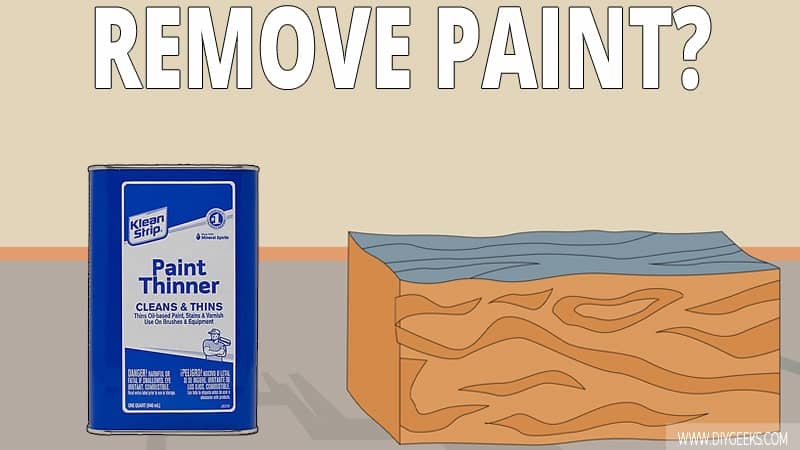Paint thinner is a solvent used to thin (or dilute) paints and reduce their viscosity or thickness for easier application. But, can you remove paint with paint thinner?
You can remove paint with a paint thinner. The paint thinner will penetrate the paint coating, break the bond between the binders, dissolve the particles, and liquefy the coating.
However, porous and sensitive surfaces will get damaged if exposed to the thinning compound for extended periods of time.
Can You Remove Dried Paint With Paint Thinner?
You can remove dried paint with paint thinners that contain acetone. Paint thinner will penetrate the paint coating, break the bond between the binders, and turn the paint particles from solid to liquid.
Paint thinners that don’t contain acetone or alcohol can’t remove dried paint as they aren’t strong enough to dissolve the paint binder.
How Long Does Paint Thinner Take To Remove Paint?
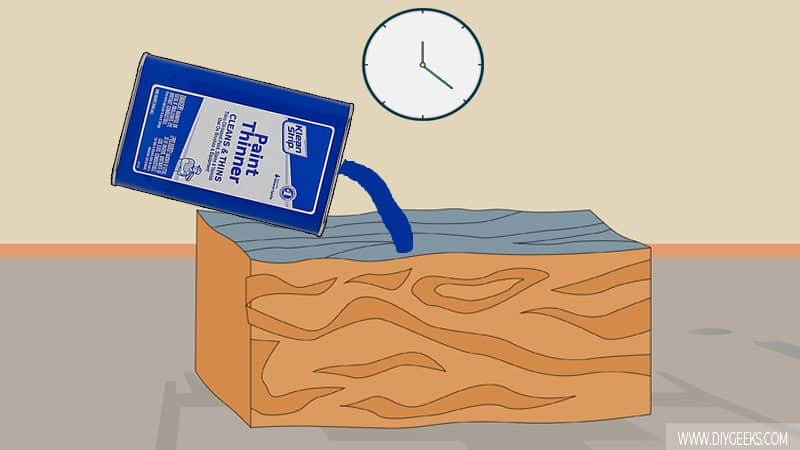
Paint thinner takes around 20 minutes to remove paint. The thinning compound must penetrate the paint coating, break the bond between the paint binder, and dissolve the paint particles and liquefy the coating.
The exact time depends on the paint thinner type, paint type, and paint coats number. For instance, paint thinner removes water-based paints faster than oil-based paints.
Some paint thinner types remove paint faster than others. For instance, lacquer thinner removes paint faster compared to other thinning compounds as its formulated with extra additives.
How To Remove Paint Using Paint Thinner?
To remove paint using paint thinner, do the following things.
- Clean the Paint Finish.
- Apply Paint Thinner.
- Wait 20 Minutes.
- Clean the Surface.
The tools you need for this project are listed below.
- Rags
- Paint thinner
- Dish soap
- Warm water
- Degreaser
- A soft scrubbing brush
1. Clean the Paint Finish
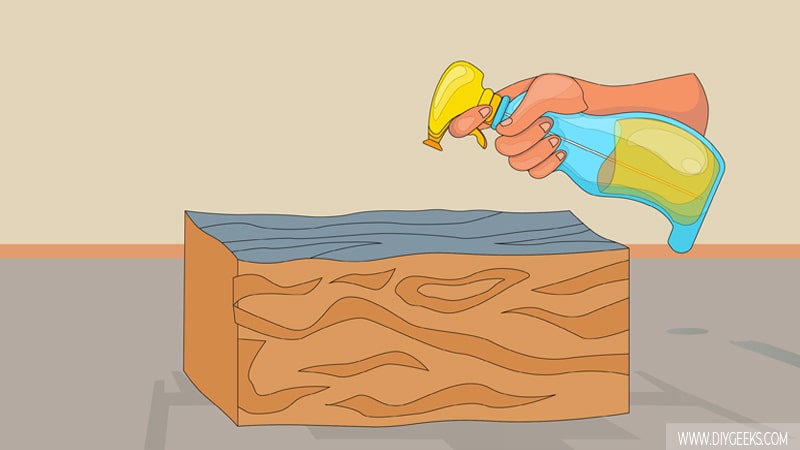
Clean the paint finish to remove dust, dirt, grease, or stains that can prevent paint thinner to penetrate the finish.
To clean a paint finish, use a dampened rag or degreaser.
2. Apply The Paint Thinner
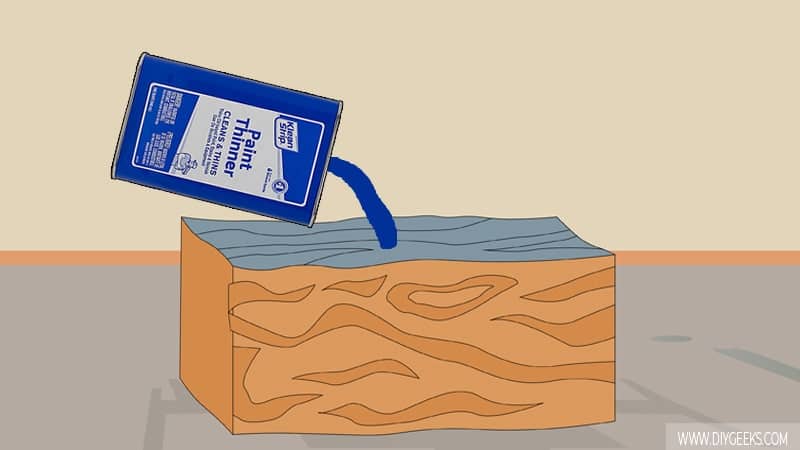
Damp a rag with paint thinner and use the dampened rag to wipe the paint finish surface. Don’t pour paint thinner directly over paint as it can damage or discolor porous and sensitive underlying surfaces.
3. Wait 20 Minutes
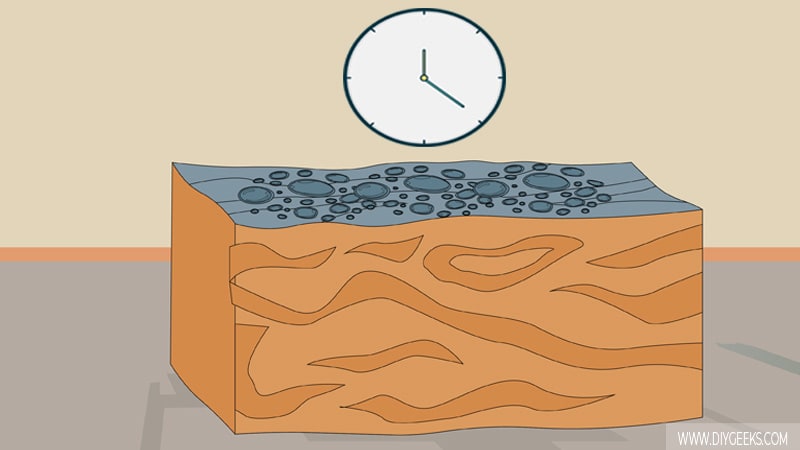
Paint thinner takes around 20 minutes to penetrate and dissolve a paint coating. During this time, the paint coating will start to change its form, bubble, turn semi-solid and then liquefy.
Use a rag or paint scrape to remove the paint from the surface once the paint turns semi-solid or liquefies.
Re-apply paint thinner for leftover paint stains on the surface and scrape them.
4. Clean the Surface
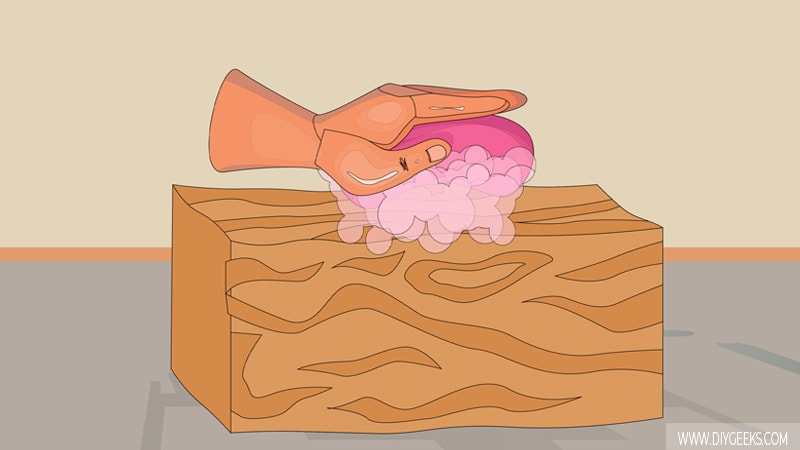
Once paint is removed, clean the surface to remove paint thinner residue. The surface will get discolored or damaged if paint thinner stays over it for too long.
To clean the surface, do the following things.
- Mix warm water with dish soap.
- Pour the warm soapy water over the surface.
- Use a scrubbing brush to scrub the surface.
- Pour clean water.
- Allow the surface to dry.
Can You Remove Wood Stain With Paint Thinner?
You can remove wood stain with paint thinner. Wood stain don’t have a protective topcoat that prevents the thinning compound from penetrating and dissolving it.
To remove wood stain with paint thinner, do the following things.
- Damp a rag with paint thinner and use the dampened rag to wipe the surface.
- Apply pressure while wiping the surface with the dampened rag.
- Wait 20 minutes.
- Use a clean rag to wipe the wood stain from the surface.
- Clean wood with soapy water.
- Allow wood to fully dry.
Don’t pour paint thinner directly as wood stain penetrates the wood pores deeply. Instead, damp a rag and wipe surface by applying pressure so the paint thinner penetrates the wood pores and removes the wood stain.
Can You Remove Paint With Paint Thinner From Different Surfaces?
You can remove paint with paint thinner from the following surfaces.
Wood
You can remove paint from wood with a paint thinner. But, don’t pour paint thinner directly over wooden surfaces as it can discolor or damage them.
Carpet
You can remove paint from some types of caperts using paint thinner.
Carpets made of fur, wool, or cotton can get damaged if exposed to paint thinner. Always test a small part of carpet first.
To remove paint from carpet, do the following things.
- Damp a rag with paint thinner.
- Use the dampened rag to wipe the surface.
- Wait a few minutes.
- Use clean water to wash the carpet, then allow it to dry.
Concrete
You can remove paint from concrete with paint thinner as concrete surfaces won’t get damaged or discolored from it.
However, ensure to properly clean (wash) or scrub the concrete after removing paint.
Paint Brushes
To remove paint from brushes, do the following things.
- Pour paint thinner into a paint bucket.
- Dip the paintbrush into the paint bucket.
- Wait 20 minutes.
- Use a small soft brush to clean the paint from the brush.
- Rinse the brush with clean water.
Plastic
You can remove paint from hard plastics using a paint thinner. But, you can’t remove paint from rubber-like plastic surfaces as the thinning compound can damage them.
Clothes
To remove paint from clothes, do the following things.
- Scrape paint from the cloth.
- Turn the cloth inside out.
- Damp a rag with paint thinner and use the dampened rag to wipe the paint spots.
- Wait 20 minutes.
- Rinse the cloth with water twice.
Don’t use paint thinner on silk or wool clothes as it will damage them.
Alternative Products To Paint Thinner
- Acetone – for oil and water-based finishes.
- Baking soda – for removing water-based finishes
- Rubbing alcohol or isopropyl – for removing water-based and some oil-based finishes.
- Paint stripper – for removing oil-based and water-based finishes.
- Vinegar – for removing water-based finishes.
Tip: Always check if the product can be used on the surface before applying it to prevent damage and discoloration.
